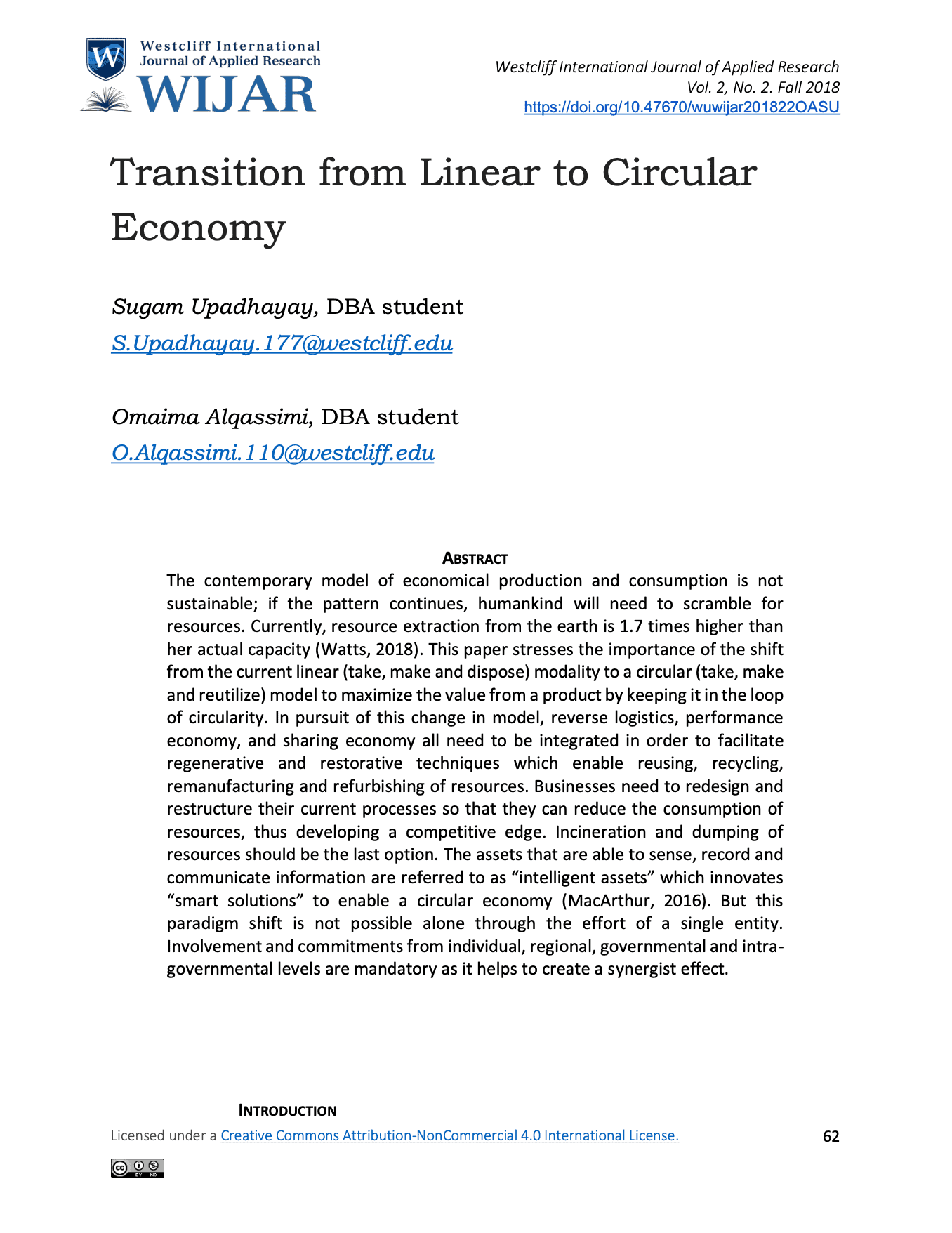Transition from linear to circular economy

Author: Sugam Upadhayay, Omaima Alqassimi
Issue: Fall Issue, 2018
Download ArticleAbstract
The contemporary model of economical production and consumption is not sustainable; if the pattern continues, humankind will need to scramble for resources. Currently, resource extraction from the earth is 1.7 times higher than her actual capacity (Watts, 2018). This paper stresses the importance of the shift from the current linear (take, make and dispose) modality to a circular (take, make and reutilize) model to maximize the value from a product by keeping it in the loop of circularity. In pursuit of this change in model, reverse logistics, performance economy, and sharing economy all need to be integrated in order to facilitate regenerative and restorative techniques which enable reusing, recycling, remanufacturing and refurbishing of resources. Businesses need to redesign and restructure their current processes so that they can reduce the consumption of resources, thus developing a competitive edge. Incineration and dumping of resources should be the last option. The assets that are able to sense, record and communicate information are referred to as “intelligent assets” which innovates “smart solutions” to enable a circular economy (MacArthur, 2016). But this paradigm shift is not possible alone through the effort of a single entity. Involvement and commitments from individual, regional, governmental and intra-governmental levels are mandatory as it helps to create a synergist effect.
